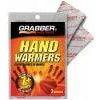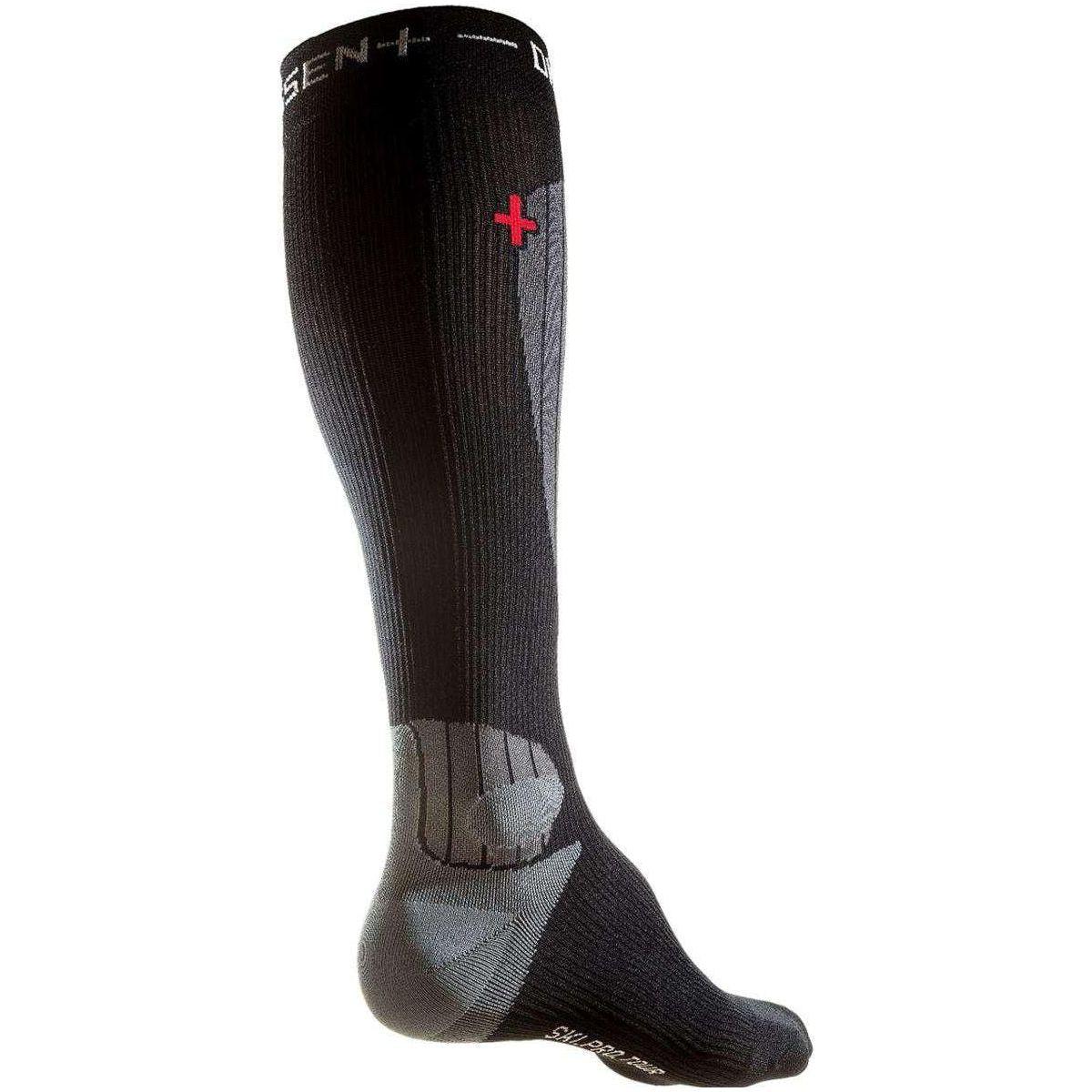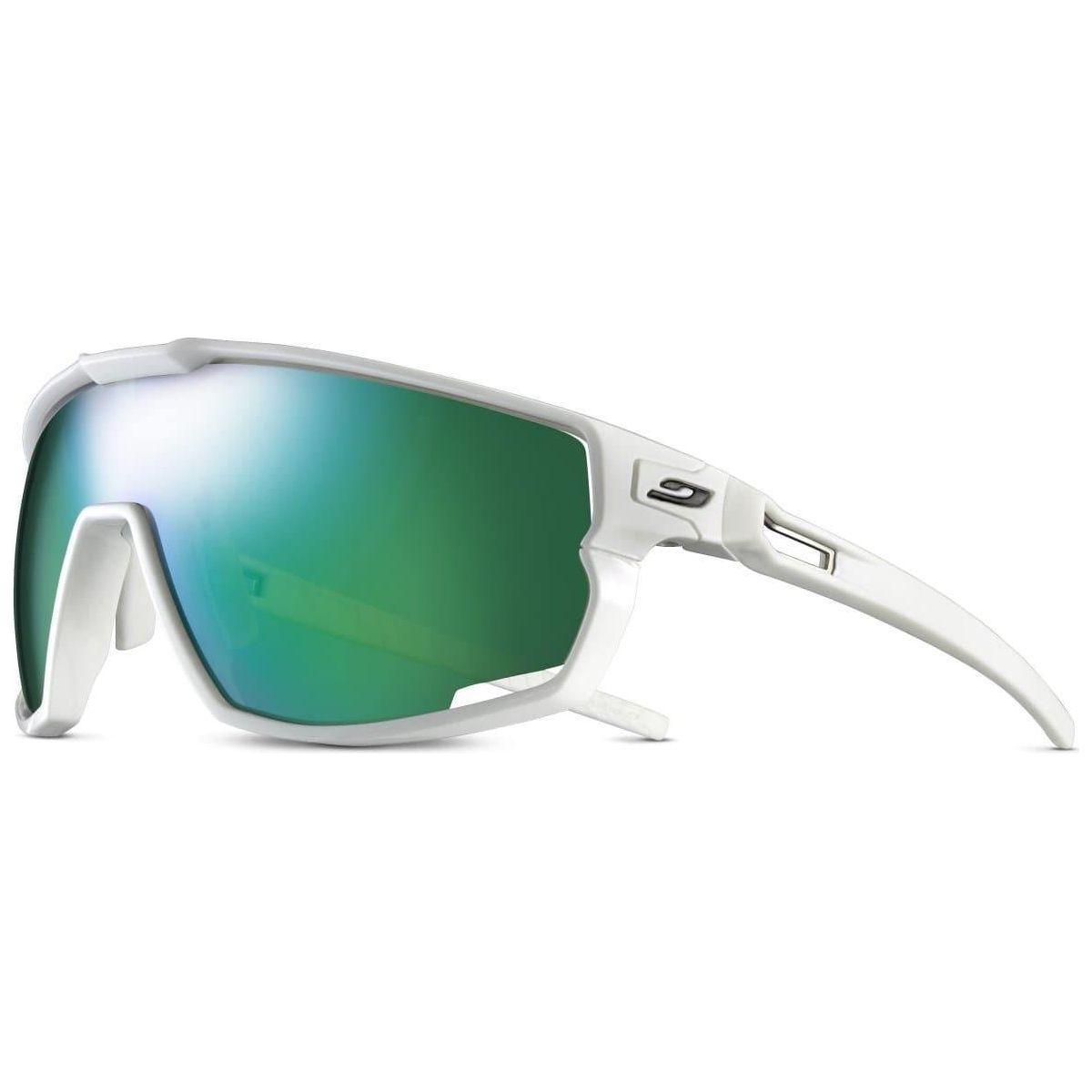Finding your first, or next ski touring setup
Cripple Creek Backcountry started in 2011 as a touring specific shop located in a tiny plaza on the outskirts of Carbondale, Colorado. Since then we have grown to include locations in Aspen, Avon, Basalt, Denver, Silverton, Vail and Seattle, in addition to online services. While we have grown, our mission remains the same. We want to streamline the buying process and get customers into the right setup to match their intention. When a customer walks into the store, it is our job to play matchmaker between them and their dream gear. We start off by finding out what our customer's experience, intention and preference is around ski touring. This allows us to first find the correct quiver slot for their objectives (we'll get more into this below) and then narrow down the choices within that quiver slot.
If you are doing the shopping and research on your own, we want you to experience the same. You can ask yourself the exact same questions that we would ask you in the shop. Figure out which quiver slot you belong in, and use your preferences and touring intention to guide the rest of your decision.
If you're having trouble finding the answers, or would like another opinion, don't hesitate to send an email to info@cripplecreekbc.com, give us a call at 970-510-0450 or set up an appointment online to come meet us in person. It would be our pleasure to get you dialed!
Check out our full starter guide for ski-touring!
Book an Appointment with our Expert Staff
1) What was your previous ski touring setup?
This is a great question for figuring out where you are coming from and where you want to go.
- If it's a pair of Salomon X-Screams with Silvrette bindings, you can now be sure that everything needs an upgrade. It also tells us that you have been around the block, or up the skin track before, and you are more experienced at ski touring.
- If your previous setup isn't as antique, but is still super heavy (such as a pair of Scarpa Freedom SL's and QST 99's with Marker Duke Frame Bindings) we might advise replacing certain aspects of your setup to make way for more efficient touring. Or maybe it's time to sell it for some cash and get something really nice.
- If you have never ski toured before and have no idea what I am talking about, that's ok too. We're going to get you into the right setup the first time which will save you time, money and headaches down the road.
2) Where do you like to ski tour?
This is the all important question for deciding your touring setup and these are a few of the common answers we get in the shop.
- I just want to tour up the resort on a groomed run with my friends before and after work. The backcountry can be an intimidating place full of avalanche danger, route finding and every snow condition known to man. However, as the sport grows you no longer need to risk life and limb to enjoy all that ski-touring has to offer. Many customers start out with the intention of never touring a day in the backcountry. Sometimes they are back within a year hooked and ready for their next setup and adventure. Other times they are happy staying home at the resort as a fitness tourer. This is great for developing your skiing and skinning techniques, getting used to your touring equipment and learning and pushing your limits in a controlled environment. In addition it's fun, relaxed and social.
- I am a runner or a cyclist and I am looking to cross train through ski touring in the winter. The racer is similar to the fitness and resort application, but is usually breathing too hard to be social. At Cripple Creek Backcountry we work hand in hand with several skimo race programs, including some of the largest ski mountaineering races in the country like the Grand Traverse and Power of Four. To compete here (or if you just want to shave minutes of your local resort uphill route) you are going to want the lightest gear possible. It really does change the pace of the entire sport, from an uphill slog to a quick and low resistance jog.
- I am here to ski perfect powder and perfect corn in the backcountry. When most people close their eyes and dream of ski touring, this is the image that comes to mind. Sweeping turns down a blank canvas of freshly fallen snow in a void of silence filled only by your own breathing. It is certainly a romantic and oftentimes elusive goal and we all know skiers who will only suite up for the promise of these dream-worthy perfect turns.
- I want to use ski touring as a mode of transportation and winter weapon for peak bagging. We get this answer often from ice climbers or summer time 14er hikers, but it also fits the athlete in pursuit of pure ski mountaineering. Your goal is no longer resort skinning, but it is far different than repeatedly going up and down the same skin track to find the best snow. The ski mountaineer is concerned with exploring first, and snow conditions are secondary to the objective
- I ski hard and want a big mountain ski for the backcountry and inbounds. Hucking cliffs and skiing steeps at high speeds is hard to do safely in the backcountry, so odds are you are going to take this setup to the resort to practice. This is also an area of gear for bigger skiers or skiers with a racing background where turns are made by throwing your entire weight into a hard charging turn rather than skiing with a more conservative backcountry style.
3) What is your Quiver Slot?
Ski touring equipment has seen an explosion of innovation in the last 10 years, giving rise to many niches within the sport, or for our purposes here, "quiver slots." This applies not just to touring skis, but to touring bindings and boots as well. Not long ago the concept of a quiver slot for your ski touring boots would have sounded absurd, but now it's widely accepted that it is impossible for one boot, ski or binding, to be great at everything. Don't despair, there are certainly setups that are good at everything, so depending on your aspirations there could still be that "quiver of one" out there for you.
If this idea of different kinds of ski touring equipment within already a small niche sport is new for you, let's put it in terms of bikes. Even if you are not a complete cycling gear nerd you understand the different needs for a road bike and a mountain bike. You certainly don't want to be hurdling down a rugged trail on skinny road tires and trust me, crawling along a paved road on 29+ inch mountain bike tires is about as frustrating as it gets. You have two bikes and you're done right? Well now what if you just need a comfy bike for cruising through town or you don't want to beat up one of your new machines through use on the beach? What if you like really long and easy trails for riding in the mountains? You may not need much suspension at all, but if you find yourself in Moab on a really rocky trail, you won't regret spending $80 to demo a cushy bike. On and on it goes and it is much the same for ski touring. This doesn't mean you need 5 setups to be prepared, but understanding your ski touring goals upfront will make sure you are not regretting a $2,500 purchase halfway through your first season.
We have placed the full range of touring skis, bindings and boots on a spectrum within 4 distinct categories. Simply put, they range from the lightest and skinniest skis starting in the race and fitness category, up to ski mountaineering, through all mountain and finishing in the widest and heaviest skis in the powder freeride category.

Here is the breakdown of each quiver slot according to the waist of the ski with the lightest quiver slot at the top and the heaviest at the bottom.
Race and Fitness
SKIS
For the Race and Fitness quiver slot you obviously answered 1 or 2 to the question, "Where do you like to ski tour?". The skis in this group strive to be under 1,000 grams and are almost always narrower than 80mm. Skiers always underestimate the importance that the width of the skins plays when trying to go fast. If you had 2 different skis that both weighed 1 kilo and one was 78mm and the other was 85mm at the waist, the 78 mm ski would feel markedly faster on the uphill thanks to an almost 10% reduction in drag due to the decrease in width. The lightest weight skis in this slot will be under 700 grams and are made for the serious racer or the brave fitness tourer that doesn't mind descending on toothpicks (we have personally found these skis do surprisingly well in a variety of snow conditions). With that being said, the 'heavier' 1 kilo skis are more forgiving and some can even handle the occasional powder day, but don't expect to podium at a ski mountaineering race.

Every gram counts when uphill speed is your goal.
BOOTS
The Race and Fitness Boots are 2 buckle offerings and are also coming in at less than 1,000 grams. If you are willing to pay close to 2 grand for a ski boot, or if you are just addicted to carbon, you can go as low as 500 grams! Just because these boots are light doesn't mean they don't ski well, but the heavier the boot on the race/fitness spectrum the more forgiving the sweet spot. On a World Cup style race boot you need to stay perfectly balanced in the front of the boot to keep them stable and responsive. If you are a little off balanced these tiny boots will feel like a bucking bronco. The boots creeping towards 1,000 grams will still have an incredible range of motion for uphill travel, but are built for a more forgiving and reliable ski decent and may be worth the weight penalty to not feel like you are at war with your gear.
BINDINGS & SKINS
Bindings in this category are incredibly light little engineering marvels which can get down to 100 grams. These are the race oriented offerings which have no adjustability, only one climbing height, and have no brakes. Those interested in the resort fitness side of things, where weight is not as much of an issue, can step into a more all mountain type of setup with multiple climbing heights and brakes. Brakes or leashes are generally mandatory for resort skinning during open hours. Skins are generally pure mohair for the fastest glide.
Shop Race and Fitness Skis
Ski-Mountaineering
SKIS
Next up, Ski Mountaineering skis have some overlap with the fitness slot. The main distinction is that a ski mountaineering ski needs to be able to hold an edge when the going gets rough or icy. This added performance makes them slightly heavier but the payoff comes from stability on the downhill. Because you never know what type of snow conditions you will encounter in the mountains, these skis range slightly wider for powder days or breakable crust. It is our recommendation that if you exceed 95 mm in the waist it becomes a bit too wide to be considered a pure ski mountaineering tool, however, there are seriously accomplished ski mountaineers that haul their heavy fat boards up the biggest mountains more days of the year than I am even on snow.
BOOTS
There is certainly more overlap with ski touring boots in the Ski Mountaineering quiver slot and any of the heavier 2 buckle race and fitness boots will be great for this purpose. That being said the lighter All Mountain boots are often warmer and more comfortable for the big mountains that require you to live in your ski boots. A ski mountaineering boot also needs to take a crampon and have control in steep and variable terrain.

Ski-Mountaineering setups need to be able to handle adverse conditions. (PC: Aidan Goldie)
BINDINGS
Bindings for Ski Mountaineering setups also span most of the spectrum. A setup on the lighter end, with a high range of motion boot, can use race bindings. Bigger skis powered by lower range of motion boots will want multiple climbing risers. Brakes can be beneficial too when putting your ski on means standing on a sketchy ridge. This boot to binding matchup is the main consideration, but generally a binding under 400 grams with some sort of riser aid is the way to go. Skins will start to become mohair/nylon blends for added grip for all but the most experienced will stick with pure mohair.
Shop Ski Mountaineering Skis
All-Mountain
SKIS
The term All Mountain is stolen directly from the alpine world and is our version of the "quiver of 1." Could you ski the deepest powder on an all mountain ski? Sure you can, too much powder is the greatest problem ever! Could you enter your local uphill race? You bet-just don't expect to win. The All Mountain skis don't get a 10 out of 10 in any particle category, but will see B+ all over their report cards. If your answer for where you tour is synched up to many of the answers above, and you don't want to buy multiple skis in your first year, then go with an an All Mountain touring ski. Because they are touring specific they will already be lightweight and a ski around 98mm will handle every ski condition proficiently and even allow you to lap your favorite runs at the resort.
BOOTS
The All Mountain touring boots range from 1000-1500 grams and can really do it all. They are lightweight on the skin track and offer incredible control when its time to lock them down. Don't get too caught up in counting buckles, some of the two buckle boots ski just as hard as four, especially when on the feet of a good skier.
BINDINGS
All mountain bindings should be feature driven. Pack in as many features as you can while keeping the weight down. These bindings generally have 3 different rise positions, brakes, and length adjustability to accept multiple boots. We're looking at 400-700 grams here. Skins should be mohair/nylon mix unless the tourer has experience with zippy less grippy mohair or ultra grippy yet slow pure nylon.
Shop All Mountain Touring Skis
Powder and Freeride
SKIS
The Powder and Freeride skis are built for going big. Big in the backcountry or big at the resort, these skis are willing to pack on extra grams for optimal downhill performance. And powder here doesn't mean the aforementioned can't handle the deep. On the contrary, it means that powder is the only snow consistency in which you would take these rigs, or land the airs these setups are made for. The terms sidecountry and slackcountry are thrown around, but are dangerous because once you leave the gates you are in uncontrolled backcountry terrain whether you can see the tram or not. This is perfect for the tourer who is in pursuit of powder or the hard charging skier that doesn't want to change their style or feel a performance difference in the resort or out. This category of skier uses wider and longer skis to stick cliff hucks and ski at high speeds. In the chart above, 120 mm underfoot is the biggest we go, but the sky is the limit if you are comfortable hauling the extra weight.

When the powder is this deep, the sky is the limit with how wide a ski you can use. As long as you're willing to slug it uphill! (PC: Aidan Goldie)
BOOTS
At Cripple Creek Backcountry we begrudgingly admit there have been incredible advances in freeride touring boots. This used to be a complete myth composed of Alpine boots with decorative walk mechanisms that left you trudging uphill. Now even the biggest burliest boots have a great range of motion that allow you to take longer more efficient strides even if they are a bit on the heavy side. Best of all, these boots rip as hard as any but the stiffest alpine race boots, so you can say goodbye to compromise.
BINDINGS
Bindings in the Powder and Freeride realm usually involve some combination of downward pressure, forward pressure, or rearward travel. This is similar to an alipine binding where there is play/elasticity in the heel and toe in order to accommodate the forces of high speed/high G turns and off balance landings. These bindings fall in the 700 gram range of a tech freeride binding up to the ungodly 2,000g plus range of a frame binding. A mohair nylon blend skin is again the way to go in most cases.
Shop Freeride and Powder Skis
Decision Time
As you can see, there is plenty of crossover, and we never pigeon hole a skier into one quiver slot. Our own quiver pieces are generally mash-ups specifically tailored to our needs. That said, these 4 categories do give you a great way to conceptualize the many options available. When it's time to move past the research stage, we are here to help. It is our job to dream up ideal quivers and we are happy to clear up any compatibility issues for your next touring setup.




